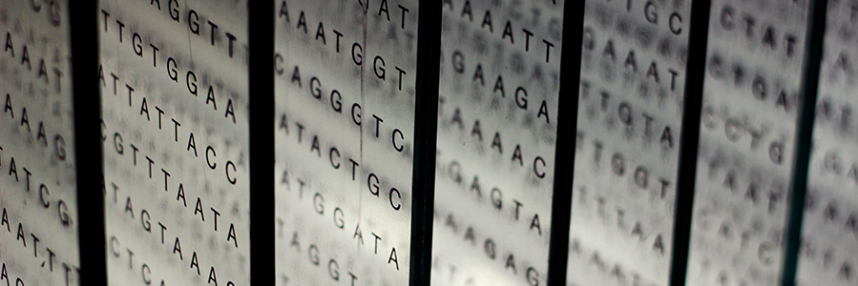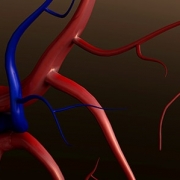The perils of clinical interpretation of genomic variants
A recent US legal case puts genetic testing and laboratory best practice under scrutiny
The path from genetic variant to classification and clinical interpretation is intricate and complex. Recent events have now placed genetic testing laboratory regulations in the spotlight, with the focus on their ability to provide reassurance for patients regarding their results. “Despite all the information we are gaining from advances in genomics, determining clinical significance is still a problem”, says Fiona Macdonald.
Tragic case of misclassification?
Recently, GenomeWeb reported a legal case in the US in which the mother of a child with epilepsy is suing a genetics laboratory for the misclassification of a genetic variant in the SCN1A gene, which causes Dravet syndrome, a rare inherited form of epileptic encephalopathy.
When the genetic testing report on the child was issued in 2007, the variant was detected, but described as a variant of unknown significance (VUS), and hence, the laboratory did not consider there was sufficient evidence to link the mutation to the cause of the child’s epilepsy. Unfortunately, as a consequence he remained on drugs contraindicated in proven Dravet syndrome, his condition worsened and he died following a severe seizure. The report of the case suggests that in fact this variant had been reported in the literature as causing Dravet syndrome at the time of testing, and should not therefore have been called a VUS. The case is complex, and a legal resolution is likely to take some time.
Complexity of variant interpretation
However, the case does highlight the complexities of variant interpretation. Despite all the information we are gaining from advances in genomics, determining clinical significance is still a problem. Diagnostic laboratories therefore need to have agreed standards to assist in the interpretation of variants and to establish consensus best practice guidelines which provide support should such a scenario arise as seen in the US. Standards have been developed by the UK Association of Clinical Genetic Science together with the Dutch Society of Clinical Genetic Laboratory Specialists to guide laboratories1. A similar set of guidelines has been published by the American College of Medical Genetics 2. These provide algorithms for laboratories to follow to assist with interpretation, but are not definitive. Hence it is important that interpretation and reporting is carried out by appropriately qualified staff in certified laboratories (for example, ISO 15189 in the UK). In addition, UK national external quality assurance (UKNEQAS) has developed an assessment scheme for the interpretation of variants. This adds an additional level of reassurance, as poor performance in UKNEQAS is reviewed as part of laboratory accreditation. None of this guidance is legally mandatory, but diagnostic laboratories do follow these standards as evidenced through schemes such as UKNEQAS.
Classification of variants
So how do laboratories define sequence changes? The most commonly used system classifies variants into one of five categories. Class 5 and 4 variants are defined as pathogenic or likely pathogenic, and can be reported as confirming or consistent with a diagnosis respectively. Interpretation of these variants is relatively straightforward. The nature of the DNA sequence change in a gene may have a significant impact on the structure of the protein whose production it specifies; for example, nonsense or frameshift mutations can result in a truncated or altered protein. Others may be missense changes – these typically cause less drastic changes to proteins but some may have been found so often in association with a disease (and never in the general population) that they are recognised as pathogenic. These variants will frequently have been described in the literature and reported on mutation databases as causative of a particular condition. These variants are also absent from large population datasets such as those from the 1,000 Genomes Project, the Exome Sequencing Project (ESP) or Exome Aggregation Consortium (EXAC).
Equally straightforward to interpret are class 1 genetic variants, which are defined as not pathogenic, and class 2 which are defined as unlikely to be pathogenic. Class 1 variants are common among healthy individuals, being present in population databases at a frequency over 5%, or greater than that expected for the disorder in question. Laboratories will generally not report variants these two classes, as doing so can sometimes lead to confusion, but details will generally be kept on record.
Class 3 variants are those where pathogenicity or lack of it cannot be assigned based on current knowledge, and are termed VUS, as seen in the legal case described. Laboratories can and do spend a significant amount of effort to establish the role of these variants. These include all the criteria used to classify the other four classes of variants, such as searching the published scientific and clinical literature, population databases and disease specific databases. Computerised analysis of variants is also carried out, but these in silico results have to be treated cautiously, as they are based on assumptions. In general they will not be used in isolation to assign causality, but may lend weight to other evidence. Laboratories may also ask to test other members of families to determine if possession of the VUS segregates with the disease in question.
Ensuring fidelity of findings
Labs are generally quite cautious with interpretation and in many cases variants of unknown significance remain unclassified. However, as demonstrated by the US legal case, there are issues if existing, relevant data is missed or is interpreted too cautiously by laboratories. It is important for labs to re-visit VUSs on a regular basis as new information may become available which changes the interpretation of variants. On rare occasions, a review will result in the change of designation of a variant from class 5 to class 1, or in the opposite direction from class 1 to class 5 (reviews can affect all classes of variants). Laboratories also need to be prepared to share their own data and to submit it to well-curated clinical databases such as ClinVar. It is only in this way that a large body of evidence can be accumulated to aid decision making.
Hopefully, the Genomics England clinical interpretation partnerships (GeCIPs) will also help in this area, as their role is to review variants with uncertain classification. Outcomes from GeCIPs may not result in immediate answers, and may stimulate further investigative research, but will hopefully ultimately contribute to ensuring the fidelity of findings from genetic and genomic testing for patients.
- Practice Guidelines for the Evaluation of Pathogenicity and the Reporting of Sequence Variants in Clinical Molecular Genetics. Wallis Y, Payne S, McAnulty C et al. (2013).
- Standards and guidelines for the interpretation of sequence variants: a joint consensus recommendation of the American College of Medical Genetics and Genomics and the Association for Molecular Pathology. Richard S, Aziz N, Bale S et al. (2015), Genetics in Medicine 17, 405–423.
Fiona Macdonald is a consultant clinical scientist based primarily in the West Midlands Regional Genetics Laboratory, and is a fellow of the Royal College of Pathologists. She is an author on more than 80 papers and has also written a variety of book chapters as well as co-authoring two books on the molecular basis of cancer.
–









